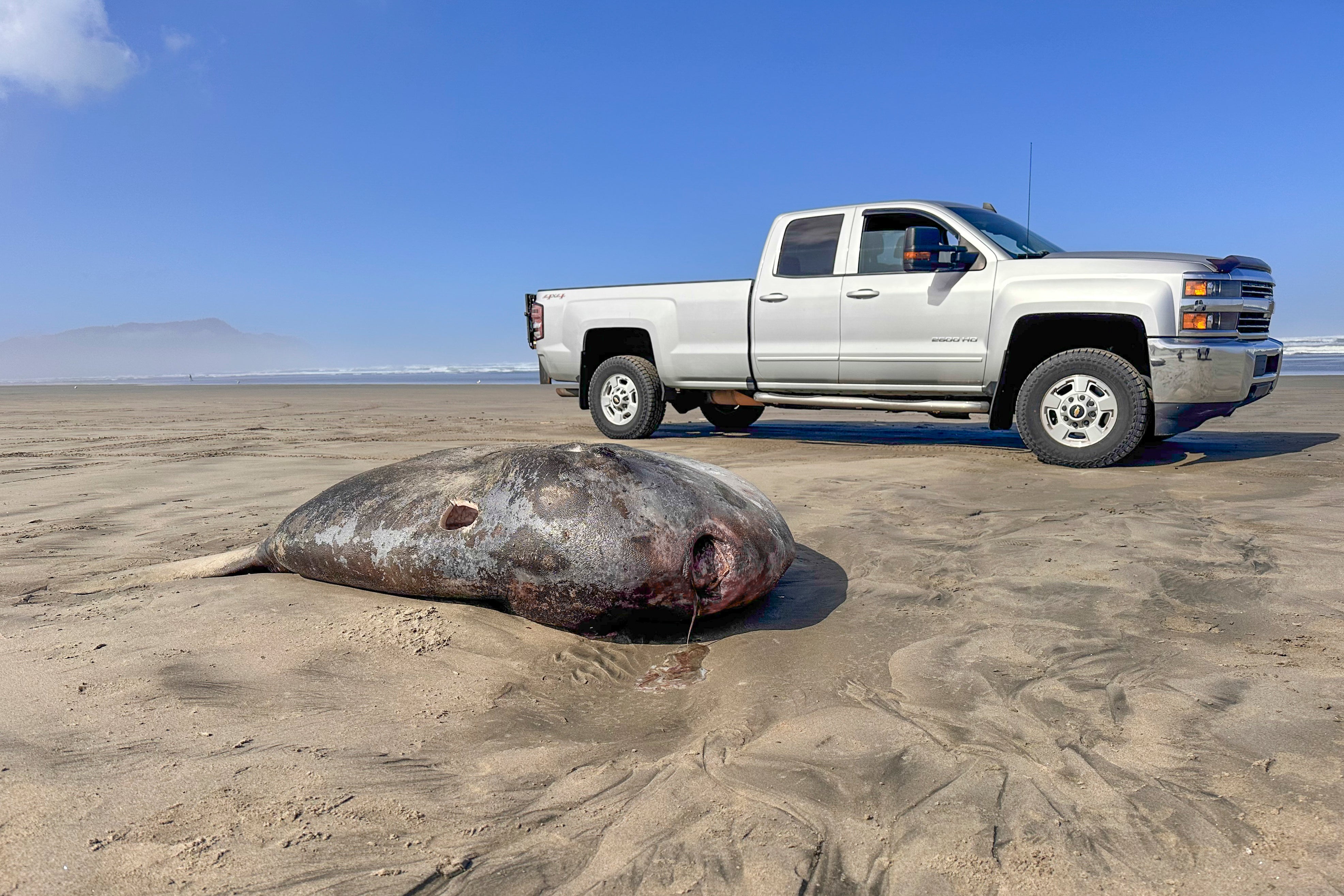A huge rare sea creature has washed up on a public beach. It could be there for weeks
The creature may remain there for weeks as it is difficult for scavengers to puncture its tough skin
A huge rare fish, that could be the biggest on record, has washed up on Oregon's northern coast, drawing crowds of curious beachgoers intrigued by the unusual sight.
The massive creature is thought to only live in temperate waters in the southern hemisphere
The 7.3-foot (2.2 meter) hoodwinker sunfish first appeared on the beach in Gearhart on Monday, the Seaside Aquarium said in a media release.

The hoodwinker is larger and sleeker than other species of sunfish, it can weigh up to 2,000kg. The fish grow rapidly, putting on up to 800 pounds in 15 months.
It was still on the beach on Friday and may remain there for weeks, the aquarium said, as it is difficult for scavengers to puncture its tough skin.

Photos provided by the aquarium showed a flat, round, gray fish lying on its side in the sand. Photos of a person kneeling next to it, and another of a pickup truck parked next to it, gave a sense of its large scale and size.
The stir it has created on social media prompted a New Zealand-based researcher who has studied sunfish to contact the aquarium. After looking at photographs of the fish, Marianne Nyegaard was able to confirm that it was indeed a hoodwinker sunfish — rarer than the more common ocean sunfish — and said she believed it may be the largest such fish ever sampled, according to the aquarium.

In research published in 2017, Nyegaard discovered through genetic sampling and observation that the hoodwinker sunfish, or Mola tecta, was a different species than the ocean sunfish, Mola mola. “Tecta” in Latin means hidden or disguised, referring to a new species that had been hiding in plain sight.
In previous years, the hoodwinker sunfish has washed ashore on the California coast. It's also again washed ashore more recently in California and Alaska, challenging the theory that it only lives in the southern hemisphere, the aquarium said. It's also likely that the fish has washed ashore in other parts of the Pacific Northwest but was mistaken for the more common ocean sunfish at the time, the aquarium added.
Bookmark popover
Removed from bookmarks